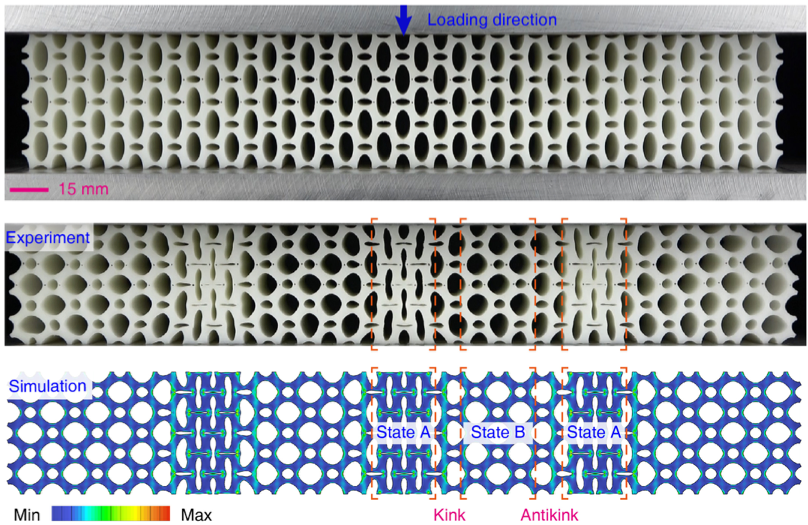A collaboration between Professor Guy Genin, the Harold and Kathleen Faught Professor of Mechanical Engineering at Washington University in St. Louis and Changqing Chen, professor in the School of Aerospace and director of Tsinghua University’s Institute of Solid Mechanics (ISM), has led to a breakthrough in the development of metamaterials that can be designed to deform into programmable deformation patterns. The work, which opens the door to mechanical memory storage and design of new soft robots, appears in this week’s issue of the journal, Nature Communications. Professor Genin is a McDonnell Academy Ambassador and Tsinghua University is one of the Academy’s university partners.
Underlying this breakthrough is the development of a new framework for analyzing the structure of metamaterials to predict the emergence of a waveform known as a static topological soliton. Static solitons are stable but reversible deformation patterns that emerge under critical levels of mechanical loading. Such localized deformation has been challenging to program into materials because they are so sensitive to minor defects in the material. The classic example of this challenge is the buckling of a long, slender column under compression, which always occurs at levels of loading lower than the predicted buckling load due to these imperfections. However, when constrained by other columns in a metamaterial, the new framework shows that the sensitivity to imperfections can be reduced dramatically, enabling the achievement of the longstanding goal of programmable topological structures that control solitons. A surprise revealed using the framework was that programmability did not arise from the specific architecture of the repeating structural motif (the “unit cell”) that makes up a metamaterial, but rather from the way that the unit cells interact with each other to store and release energy. The team demonstrated this through a series of experiments on metamaterials that they designed using their new framework.

More broadly, the new general framework shows that it is possible to excite robust, static, periodic solitons, and opens an entirely new class of controllable, ordered and defect-insensitive localizations in metamaterials.
